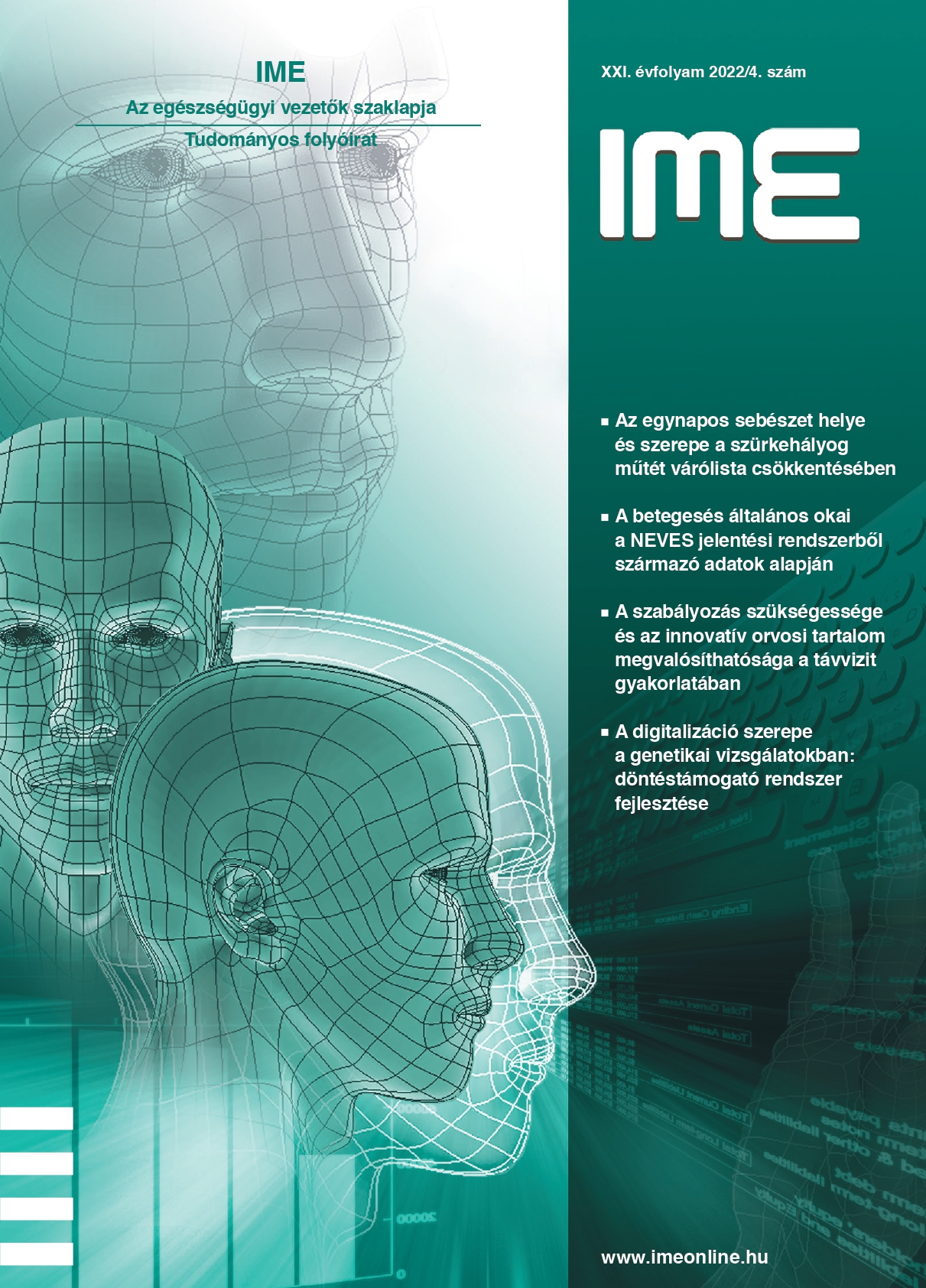A betegesés általános okai a NEVES jelentési rendszerből származó adatok alapján és a megelőzésben alkalmazható eszközök
Absztrakt
Az egészségügyi ellátás során bekövetkező betegesések megelőzése mind a betegellátás biztonságának javítása, mind pedig az egészségügyi szolgáltatók költségeinek csökkentése szempontjából fontos fejlesztési lehetőség.
Dolgozatunk célja, hogy bemutassuk a NEVES jelentési rendszerbe érkezett adatok elemzésére alapozott kutatási eredményeket, amelyek rávilágítanak az egészségügyi szolgáltatóknál bekövetkezett betegesések általános okaira és azok megelőzési lehetőségeire.
A NEVES jelentési rendszer indulása óta az adatfeldolgozás megkezdéségig 15.077 betegesési esemény adatait jelentették magyar egészségügyi szolgáltatók anonim, önkéntes módon. Ezeket az adatokat statisztikailag elemeztük, és minőségfejlesztési technikákat is alkalmazva kerestük a bekövetkezésükben szerepet játszó okokat. A vonatkozó szakirodalmak áttekintésével és a szakértői egyeztetésekkel szerzett további ismereteinket is felhasználva rendszereztük a kutatás során azonosított okokat és a megelőzési lehetőségeket.
Az okokat 12 fő csoportba soroltuk, amelyek közül kiemelendők a kockázatfelmérés hiánya, a prevenciós intézkedések elmaradása, a kommunikáció hiányosságai és az infrastrukturális problémák. Fontos felhívni a figyelmet arra, hogy ezeket az okokat rendszerben érdemes kezelni. Az eredményes megelőzés érdekében az adott intézményi környezetben minden lehetséges okot fel kell tárni, és minél több ok megszüntetésére törekedve komplex intézkedéseket hozni. Dolgozatunkban felvázoljuk, hogy a betegesések bekövetkezését előidéző okok azonosításakor milyen konkrét intézkedések segíthetik a megoldást.

This work is licensed under a Creative Commons Attribution-NonCommercial-NoDerivatives 4.0 International License.




